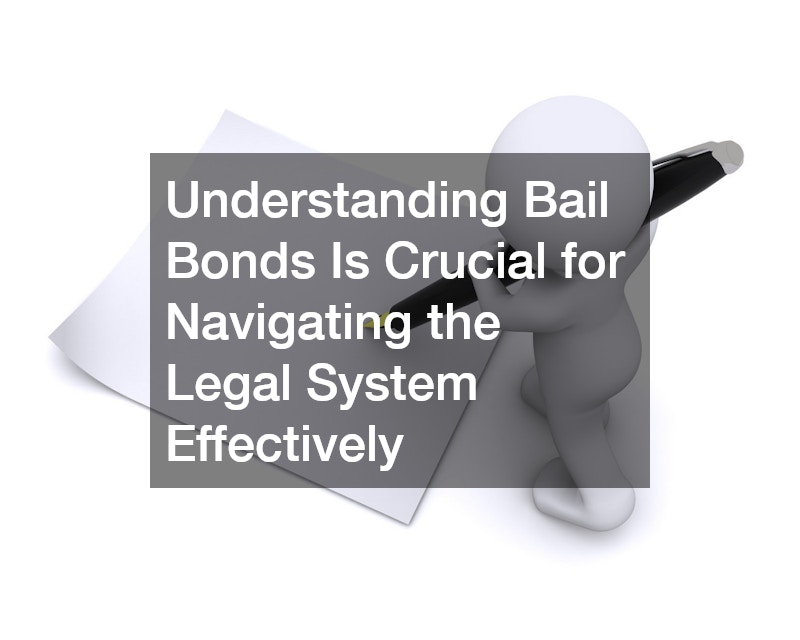In this guide, we’ll provide a comprehensive overview of bail bonds to help first-time clients navigate the legal landscape. Understanding the bail process can be overwhelming, but with the right information, you can make informed decisions and feel confident in your actions.
What is a Bail Bond?
Definition of a Bail Bond
A bail bond is a form of surety bond provided by a bail bondsman that secures the release of a defendant from custody. It acts as a guarantee that the defendant will appear in court as scheduled.
When someone is arrested, the court sets a bail amount based on the severity of the offense and other factors. The bail bond enables the defendant to be released from jail while awaiting trial by covering the bail set by the court.
This system helps reduce jail overcrowding and allows defendants to prepare for court appearances from outside of jail. Many individuals rely on bail bonds to regain their freedom quickly during legal proceedings.
Types of Bail Bonds
There are several types of bail bonds available, including cash bonds, surety bonds, and property bonds. Each type serves to secure the defendant’s release and ensures their return to court.
A cash bond requires the total bail amount to be paid in cash, while a surety bond is obtained through a bail bondsman who charges a fee, usually a percentage of the total bail. Property bonds involve using real estate as collateral, which can be a more complex option.
While cash bonds can be refunded when the trial concludes, surety and property bonds primarily focus on ensuring compliance. The choice of bond type often depends on financial circumstances and the urgency of the case.
How Do Bail Bonds Work?
The Bail Bond Process
The bail bond process begins when an arrest is made, and a bail amount is set by the court. The defendant or their family contacts a bail bondsman to arrange for a bail bond.
The bondsman will require specific information about the defendant, as well as the bail amount, before agreeing to post the bond. Once the bail bond is secured, the defendant is released from custody, but must attend all court proceedings as required.
This process is usually straightforward and can be completed quickly, depending on the circumstances. A co-signer may be required to guarantee the defendant’s appearance in court, adding another layer of security for the bail bondsman.
Cost and Fees
The cost of a bail bond typically involves a non-refundable premium charged by the bail bondsman, usually around 10% of the bail amount. Additional fees may apply for services provided during the bond process.
These premiums act as compensation for the risk the bail bondsman takes on by securing the defendant’s release. It is essential for clients to be aware of all costs involved and to budget accordingly.
For those unable to pay the premium upfront, some bail bondsmen offer financing options or payment plans. Understanding these financial obligations is crucial to avoiding further complications during the legal process.
What Are the Risks Involved?
Legal Obligations and Responsibilities
Obtaining a bail bond involves certain legal obligations that the defendant must adhere to. Primarily, they must attend all required court appearances as scheduled.
Failure to do so can result in a bench warrant for their arrest and forfeiture of the bail, which can have serious financial and legal consequences. The defendant must also comply with any other conditions set by the court or bondsman.
Knowing and understanding these obligations is crucial for ensuring a smoother legal experience. Both the defendant and co-signer bear the responsibility of fulfilling these terms once the bond is in place.
Consequences of Failing to Meet Obligations
If the defendant fails to meet their obligations, such as not appearing in court, the bail bond can be forfeited. This means the court keeps the full bail amount, and the co-signer is liable for repaying the bondsman.
The bail bondsman may also employ a bounty hunter to locate and return the defendant to custody, adding to the complexity and cost. Such outcomes can have severe repercussions on both financial stability and personal circumstances.
The key to avoiding these adverse consequences is strict adherence to all legal requirements. Open communication with the bail bondsman can also help manage expectations and prevent misunderstandings.
Choosing a Bail Bondsman
Factors to Consider
When selecting a bail bondsman, reputation is one of the most important factors to consider. Researching reviews and feedback from previous clients can provide insight into their reliability and professionalism.
Ensuring that the bondsman is properly licensed according to state regulations is also essential. A licensed bail bondsman adheres to the legal standards and offers a layer of security in the bail process.
Comparing costs, fee structures, and the level of service provided can help make an informed decision. Finding a trustworthy and transparent bail bondsman is critical to navigating the bail process effectively.
Questions to Ask a Potential Bail Bondsman
Asking the right questions is vital when determining if a bail bondsman is the right fit for your needs. Inquire about their experience, services offered, and the total cost involved.
Understanding the timeline from initiating the bond to release is also crucial for effective planning. Clients should also ask about payment options and any guarantees provided by the bondsman.
By engaging in open dialogue, clients can foster transparency and build trust with their chosen bail bondsman. This proactive approach can greatly enhance the bail experience and reduce added stress.
Understanding bail bonds is crucial for navigating the legal system effectively. With this guide, first-time clients should feel more informed and prepared to handle the challenges associated with the bail process.
Taking the time to research and ask the right questions can make a significant difference in your experience. By choosing a reputable bail bondsman and understanding legal obligations, you can pave the way for a successful resolution to your legal journey.




